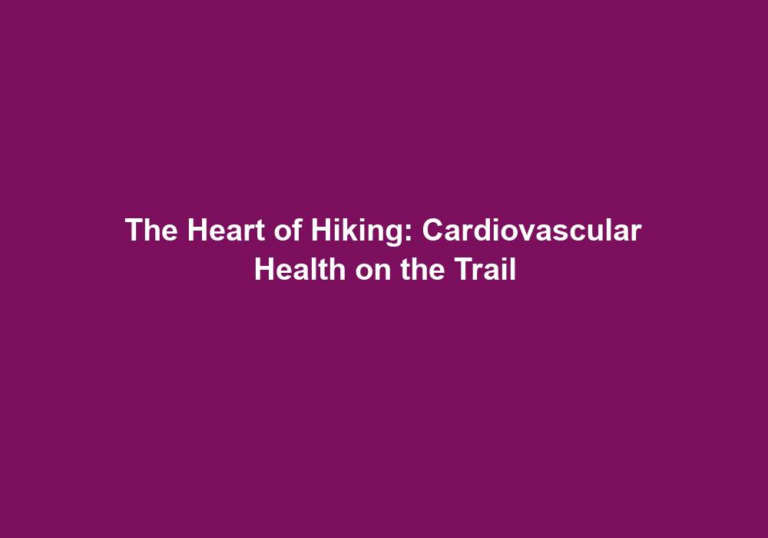Blood Thinners: Lifesaving Breakthroughs in Heart Care
Heart disease is a prevalent health concern affecting millions of individuals worldwide. One of the most critical aspects of heart care involves preventing blood clots, which can lead to life-threatening conditions such as heart attacks and strokes. Thankfully, medical advancements have introduced a lifeline for patients in the form of blood thinners. These breakthrough medications have revolutionized the field of heart care, providing effective treatment options for individuals at risk. In this article, we will explore the significance of blood thinners, their types, and the cutting-edge breakthroughs that have transformed heart care.
Understanding Blood Thinners
Blood thinners, also known as anticoagulants, are medications designed to prevent the formation of blood clots. These clots occur when blood cells stick together and form a mass that can block blood vessels, leading to severe complications. Blood thinners work by inhibiting the clotting factors in the blood, reducing the risk of clot formation and promoting blood flow.
The significance of blood thinners cannot be overstated. By preventing the formation of blood clots, these medications play a crucial role in reducing the risk of life-threatening conditions such as heart attacks and strokes. They help maintain the normal flow of blood through the blood vessels, ensuring that vital organs receive the necessary oxygen and nutrients. Blood thinners are particularly important for individuals with certain medical conditions, such as atrial fibrillation, deep vein thrombosis, or those who have undergone certain surgical procedures.
Types of Blood Thinners
There are several types of blood thinners available today, each with its unique mechanism of action. These include:
- Heparin: Heparin is a fast-acting blood thinner typically administered intravenously in emergency situations. It prevents the formation and growth of blood clots and is commonly used during surgeries or in hospitalized patients.
Heparin, a widely used blood thinner, is effective in preventing blood clot formation by inhibiting the activity of clotting factors. It acts as an anticoagulant, preventing the conversion of fibrinogen to fibrin, which is essential for clot formation. Heparin is commonly used in situations where immediate anticoagulation is required, such as during surgeries or in patients with acute deep vein thrombosis. However, it requires careful monitoring due to its potential side effects, such as bleeding complications.
- Warfarin: Warfarin, also known as Coumadin, is an oral blood thinner that has been widely used for decades. It works by interfering with the body’s ability to utilize vitamin K, an essential component in the blood clotting process. Warfarin requires regular monitoring and dosage adjustments to maintain the desired level of anticoagulation.
Warfarin is a well-established blood thinner that has been used for many years. It works by inhibiting the production of vitamin K-dependent clotting factors, thus preventing blood clot formation. However, its effectiveness is highly dependent on maintaining the appropriate dosage, which requires regular monitoring of the patient’s International Normalized Ratio (INR). Warfarin interacts with many medications and foods, making it necessary for patients to follow strict dietary restrictions and be cautious while taking other medications.
- Direct Oral Anticoagulants (DOACs): DOACs are a newer class of blood thinners that offer certain advantages over traditional options. These medications include rivaroxaban, apixaban, dabigatran, and edoxaban. DOACs inhibit specific clotting factors in the blood and have a more predictable dose-response pattern, eliminating the need for frequent monitoring.
DOACs have emerged as a promising alternative to traditional blood thinners due to their ease of use and predictable response. Unlike warfarin, DOACs do not require frequent monitoring of INR levels, making them more convenient for patients. These medications selectively target specific clotting factors, such as factor Xa or thrombin, inhibiting their activity and preventing the formation of blood clots. DOACs have been shown to be as effective as warfarin in preventing stroke and systemic embolism in patients with atrial fibrillation, with a lower risk of bleeding complications.
- Antiplatelet Agents: While not strictly blood thinners, antiplatelet agents like aspirin and clopidogrel play a crucial role in preventing blood clot formation. They work by inhibiting the aggregation of platelets, which are responsible for clot formation. These medications are commonly prescribed to individuals at risk of heart attacks or strokes.
Antiplatelet agents are often used in combination with blood thinners or as an alternative in certain situations. They primarily prevent platelets from sticking together, reducing the risk of clot formation. Aspirin, a commonly used antiplatelet agent, inhibits the synthesis of thromboxane A2, a potent platelet aggregator. Clopidogrel, another antiplatelet agent, blocks the activation of platelets by inhibiting the binding of adenosine diphosphate (ADP) to its receptor on platelet cell membranes. These medications are particularly effective in preventing clot formation in individuals with coronary artery disease or those who have undergone stent placement.
Lifesaving Breakthroughs in Blood Thinners
Medical research and innovation have led to remarkable breakthroughs in the development of blood thinners, significantly improving patient outcomes in heart care. Here are some of the latest advancements in this field:
- Novel Oral Anticoagulants (NOACs): NOACs, also known as target-specific oral anticoagulants (TSOACs), represent a major breakthrough in blood thinner therapy. These medications directly inhibit specific clotting factors and offer greater efficacy and safety compared to traditional options. NOACs have been proven effective in preventing stroke and systemic embolism in patients with atrial fibrillation, a common heart rhythm disorder.
NOACs have revolutionized the field of blood thinner therapy by providing a more targeted approach to anticoagulation. Unlike traditional blood thinners, which inhibit multiple clotting factors, NOACs selectively target specific factors, such as factor Xa or thrombin. This targeted approach offers several advantages, including a lower risk of bleeding complications and a more predictable dose-response pattern. NOACs have been extensively studied and have shown equivalent or superior efficacy in preventing stroke and systemic embolism compared to warfarin in patients with atrial fibrillation.
- Reversal Agents: One challenge with blood thinner therapy has been the inability to reverse their effects in case of bleeding or emergency situations. However, the development of reversal agents has addressed this concern. Reversal agents, such as andexanet alfa, have been approved to rapidly reverse the anticoagulant effects of specific blood thinners, allowing healthcare providers to manage bleeding emergencies more effectively.
The availability of reversal agents has significantly improved the safety profile of blood thinners. In the past, the lack of specific antidotes for certain blood thinners made managing bleeding complications challenging. However, the development of reversal agents, such as andexanet alfa for factor Xa inhibitors, has provided healthcare providers with a valuable tool to reverse the anticoagulant effects promptly. These reversal agents work by binding to the blood thinner and neutralizing its activity, allowing the blood to clot normally and controlling bleeding in emergency situations.
- Personalized Medicine: Advancements in genetic testing have paved the way for personalized medicine in heart care, including the administration of blood thinners. Genetic testing can help identify individuals who may respond differently to certain medications, allowing healthcare providers to tailor treatment plans accordingly. This personalized approach optimizes the effectiveness and safety of blood thinner therapy.
Personalized medicine has emerged as an exciting frontier in heart care, enabling healthcare providers to customize treatment plans based on an individual’s genetic makeup. Genetic testing can identify genetic variations that may affect the metabolism or response to specific blood thinners. For example, certain genetic variations can influence the metabolism of warfarin, potentially leading to higher or lower anticoagulation levels. By identifying these genetic variations, healthcare providers can adjust the dosage of blood thinners or choose alternative medications to optimize treatment outcomes and minimize the risk of adverse effects.
- Safer Alternatives: While the traditional blood thinners have proven effective, they are not without limitations. However, ongoing research has introduced promising alternatives with improved safety profiles. For instance, betrixaban, a factor Xa inhibitor, has shown efficacy in preventing blood clots in patients with acute medical illnesses without significantly increasing the risk of bleeding.
The development of safer alternatives to traditional blood thinners has been a focus of ongoing research. Betrixaban, a factor Xa inhibitor, is one such alternative that has shown promise in preventing blood clots without significantly increasing the risk of bleeding. Factor Xa inhibitors selectively target factor Xa, a key clotting factor, inhibiting its activity and preventing clot formation. Betrixaban has been studied in patients with acute medical illnesses, such as congestive heart failure or respiratory failure, who are at an increased risk of blood clots. The results have shown its effectiveness in reducing the risk of blood clot-related complications without substantial bleeding risks.
Conclusion
Blood thinners have undoubtedly revolutionized heart care, offering a lifeline to individuals at risk of life-threatening blood clots. From the traditional warfarin to the latest NOACs and reversal agents, these breakthrough medications have significantly improved patient outcomes. As medical research continues to explore new avenues, the future of blood thinners looks promising, with enhanced efficacy, safety, and personalized treatment options on the horizon. With these advancements, the medical community can continue to provide lifesaving care, ensuring a healthier heart for patients worldwide.







